3 Types of Primer Paint for the Perfect Base Coat
Author: Omar Alonso | Editor: Omar Alonso
Review & Research: Jen Worst & Chris Miller
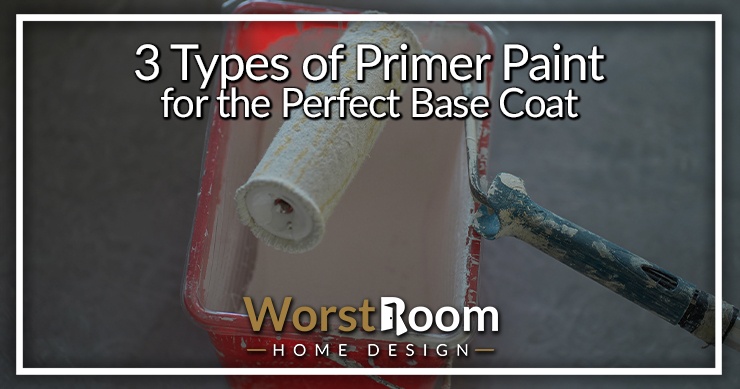
Any of the types of primer paint are a kind of coating that you apply to a surface before you apply layers of regular paint over it. This kind of priming is a useful way to hide any blemishes and ensure that the paint sticks to the surface properly and lasts long enough.
Usually, you would apply the different types of primers on different kinds of materials, such as wood, drywall, metal and plastic before switching to your desired color of paint.
3 Types of Primer Paint
Which kind of primer paint you use for either of these can depend on the material as well as the result you are hoping for. You can go through the three main types of primers below. Please make sure, for the best results, you use the right types of paint brushes based on the whether you'll be using oil, latex, or shellac primer.
Oil Primer
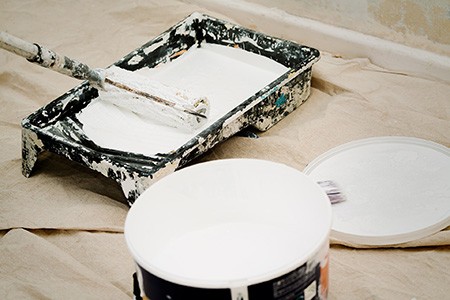
An oil-based primer is one that relies on oil as its main base material. It is also referred to as alkyd primer. This kind of primer can be a good base if you want to use latex or oil paints for your surface, making oil primer widely applicable.
Moreover, you can also apply the oil-based primer on different kinds of surfaces, including wood and metal, although it tends to be a lot more ideal for wood due to its adhesive strength, not to mention that you can easily hide any kind of blemish on the surface.
In fact, even if you already have some old paint on some kind of material, oil primers are strong enough to form a new layer to cover up the old paint effectively. Oil-based primers are quite thick too, allowing you to have the desired effect on the surface that you want to paint without any surprises later.
Because of this thickness, however, you might need to make use of mineral spirits to thin the primer a bit. This kind of thinning can also make it easier for you to clean the paint up.
To apply this kind of primer to a surface, make sure you opt for a good brush so that you can achieve a uniform coat. The best option here is a brush with natural hair or bristles.
Benefits of Oil Primer Paint
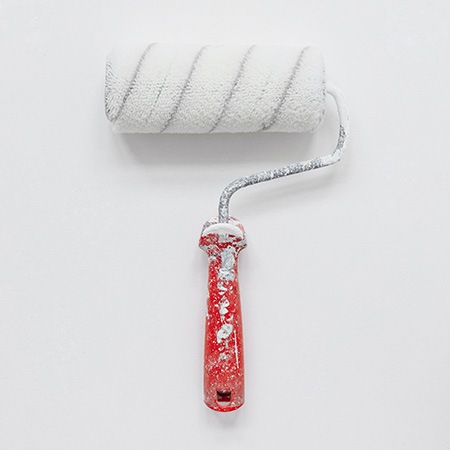
There are several benefits and drawbacks of oil-based primer paint that you must be aware of before making your decision. Let’s take a look at some of them below, starting with the benefits.
Whether you want to hide certain stains or blemishes or simply prevent any new ones from forming, oil-based primer can work well for this. This can be useful if you have kids around the house or appliances frequently touching the surface.
Oil primers can add a seal over porous wood, which can be useful for keeping the wood from releasing the tannins up to the surface. This can also be good for preventing cracks from forming.
Due to the sturdiness as well as the adaptability of the oil primer, it has the ability to bear changes in weather since it can help regulate how much the layer of paint swells or shrinks.
You can use an oil-based primer for various surfaces, including metal, peeling wood, fresh wood or even varnished or painted wood.
Cons of Oil Primer Paint
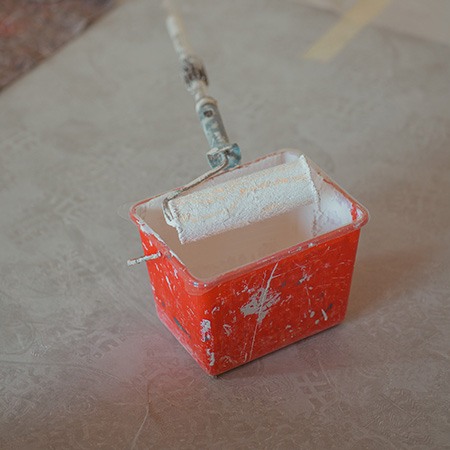
Despite these advantages, there are some points that can set oil primer back. Here are some of these drawbacks.
You can’t use oil types of primer paint on surfaces that involve combined blocks, bricks or stones since this won’t have the desired results.
You might have to wait for 24 hours, sometimes even more, for this primer to dry off thoroughly.
There are many volatile organic compounds (VOCs) present in oil primer paint, releasing toxic fumes that can harm the health as well as the environment.
Latex Primer
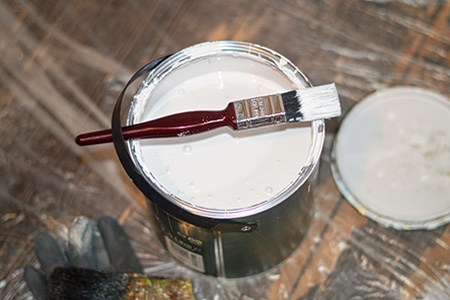
Latex primer is also called acrylic primer. The primary base involved here is water, making this kind of paint a lot quicker when it comes to application and drying. You also don’t need to use too many thinners to prepare the latex primer beforehand, making the pre-application process much quicker and more convenient.
Because of its nature, latex or acrylic primer can serve you better for certain kinds of surfaces that oil-based primer paint can’t work for. These include drywall, masonry or combined pieces of brick, stones or clay, plaster, carpentry or even painted steel or metal surfaces. Latex is also better for softer pieces of wood.
If you apply a latex primer to your given surface, you can easily top it up with paints made from latex or acrylic, which is to say, make sure you use the right types of paint on your next coats. Additionally, these primer types can work well if you generally have clean surfaces that you wish to prepare for painting.
Further, in case there are parts of the applied primer that you wish to clean up or reapply, you can easily manage to do so with latex primer. Acrylic paint is easily washable. This is mainly because the primer tends to be quite thin and can come off with some soap and water.
Being water-based themselves, these types of paint primer can also offer a bit of resistance against conditions like rain.
Benefits of Latex Primer Paint
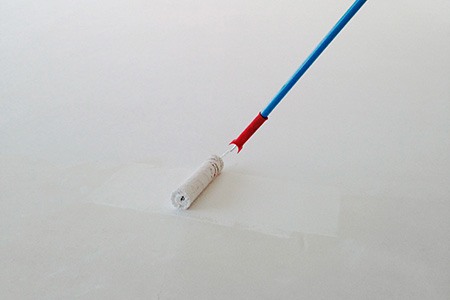
Let’s look at some other benefits of latex primer paint below.
Latex primer is quite easy to apply. You also won’t need to wait for an entire day to continue your work on the surface since this primer can dry fully quite quickly. Typically, it only takes up to four hours to finish drying.
Latex primers are quite healthy and harmless, especially in comparison to the other types of primer paint on this list. This is because they contain low levels of VOCs, with some also containing no VOCs at all. Thus, if there are people vulnerable to these in your house, latex primers can solve this issue.
Latex primers are adaptable and flexible, making them useful against potential expansions and contractions. This can prevent them from peeling or cracking.
You can clean this primer up easily, whether you use them on drywall, pine, concrete, masonry or metal surfaces.
Cons of Latex Primer Paint
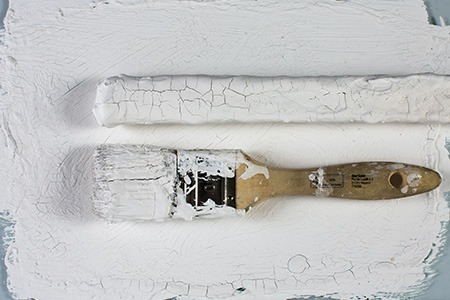
Of course, latex paint primer types aren’t perfect and contains some of the following drawbacks.
Latex primer paint won’t prove too useful if you have some heavy stains and blemishes on your surfaces. They are also a lot more prone to newer stains as compared to an oil-based primer.
Sometimes, especially when using it on wood surfaces, you might need to try it out first on a small area to ensure that the fibers from the wood aren’t coming up, especially since this is a common issue with latex primer paint which ruins the appearance of the surface.
Shellac Primer
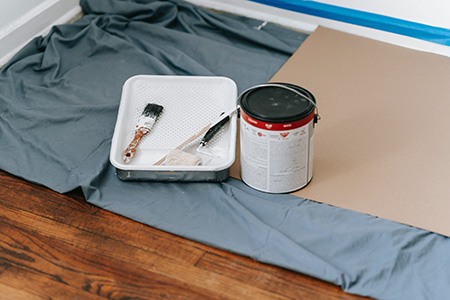
Shellac can be an ideal type of primer paint that you can use for sealing up various kinds of surfaces. In particular, if you have interior surfaces that require a layer of priming before painting, shellac can prove to be an effective choice here.
Even if you have some heavy stains to cover and work with, shellac types of paint primers can help hide these while also helping you avoid other and newer stains.
For example, if you have an interior wall that has undergone some damage due to leaks, fires and smoke, you can apply a layer of shellac types of primer paint to add a protective layer to it to enhance the appearance.
Shellac is also pretty useful if the damaged surface is emitting a burnt or damp smell since the layer can trap this smell. There are several surfaces on which you can use this kind of primer paint, such as wood, plastic, plaster, metals and more.
You should also ideally make use of synthetic bristles on your brushes to apply this kind of primer since natural bristles might end up absorbing too much of the paint. They can also help you achieve a uniform coat, which helps reduce the number of coats of primer you need on drywall, which might be difficult to achieve with a combination of shellac and natural bristles.
Benefits of Shellac Primer Paint
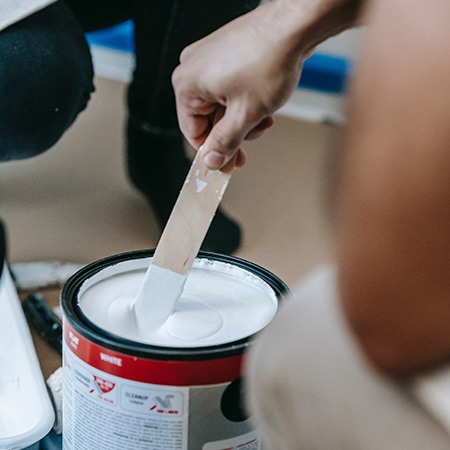
Let’s go through some benefits of shellac primer below.
Shellac primers can offer the fastest drying time out of all the other types of primers. They only take an hour or so to dry thoroughly, allowing you to begin your painting work immediately.
Shellac primers can prove to be quite useful when it comes to blocking and preventing stains no matter how heavy they are.
Shellac primer paint can stick well to the surface and ensure stronger adhesion when you apply the layer of paint to the primed surface. This can further help seal the surface, especially wood, effectively so that it doesn’t bleed too much.
Cons of Shellac Primer Paint
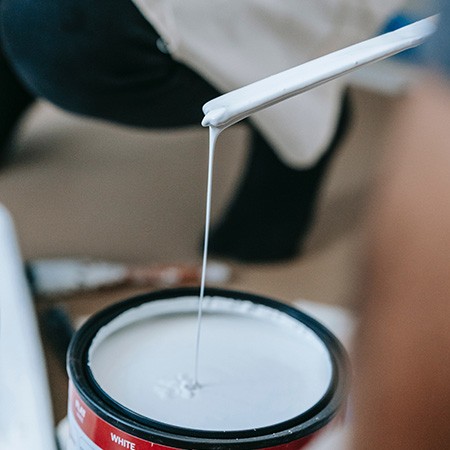
There are also some drawbacks of shellac primer that you can go through below.
Shellac primers have a high level of VOCs that can spread toxic fumes into the atmosphere, causing harm to one’s health and to the environment. With already vulnerable people, this can be quite risky.
You might need to use mineral spirits to thin these different types of primers before application. This can also make it harder to clean.
In terms of flexibility and versatility, shellac primer paint might not compare well with oil-based and latex-based primer paints.
Types of Primer Paint for Your Specific Needs
Oil, latex, and shellac are the three main types of primer paint. Which one you opt for can depend on the kind of project you want to apply it to, which is why you should consider factors like toxic fumes, versatility, drying time, durability and ability to hide stains. If all of this is sounding like too much of an ordeal, consider any of the paint alternatives we've discussed in the past to bypass the need for painting.



